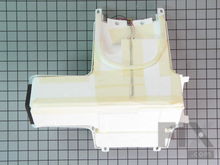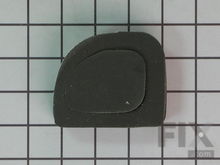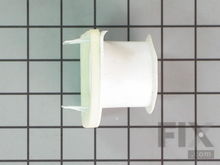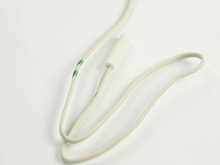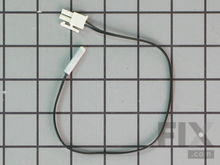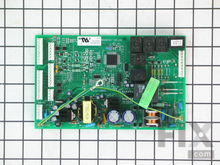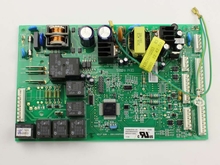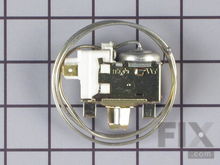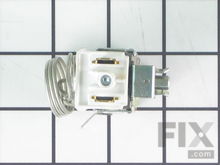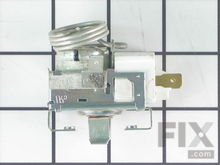How To Repair A Refrigerator That's Getting Too Cold
- Rated as REALLY EASY
- 257 repair stories
- 4 step by step videos
Air Inlet Damper or Baffle
The part of your fridge that is responsible for balancing air flow from the housing of the evaporator fan has a few names: diffuser, air damper, or baffle. On most refrigerators, it’s located where the chilled air comes into the food-holding part of the fridge, and it looks like louvered blinds. It can be distinguished from the cold control by the fact that the air inlet damper control doesn’t have an “off” setting on its knob. You should be able to open and close it easily using the knob. But if it is damaged or not hooked up to its control knob correctly, too much cold air will come into the fridge and it will be too cold. The air inlet damper or baffle is housed in Styrofoam-lined plastic. On some fridges, air leakage is kept down via a foam seal – which can be rigid – so avoid breaking that when you jiggle the knob to see if it closes. Replace the air inlet damper if it’s stuck or doesn’t close the whole way. If there is an automatic temperature-sensing bulb attached, ensure it’s positioned correctly to measure the temperature inside the fridge and do its job adjusting the control.
Temperature Sensor or Thermistor
If your fridge has an electronic control board, its temperatures are being controlled via a temperature sensor or thermistor. This is normally located near the air inlet and it is usually a capsule, enclosed in plastic, with two wires attached. The information from the sensor’s resistance to temperature will control the operation of the fans, compressor, and maybe even the damper. So a damaged or malfunctioning sensor could be at fault for a too-cold fridge, since it wouldn’t be signaling to the control board to turn the motors off. Check your owner’s manual or manufacturer’s website to decode the fault code, if you have one, or to find a diagnostic procedure for isolating problems in the temperature sensors.
Main Control Board
If you have a newer fridge, the compressor, fans, defrost system, and temperature might all be under the authority of an electronic control board. This makes home repair trickier, because the control board determines so much, plus an electronic control board is costly and complicated. And for that same reason, it makes sense to eliminate other causes of fridge malfunction before you decide the electronic control board is the broken component. So if the fridge is getting too cold, first check the external controls and the temperature sensors. Unplug the fridge and inspect the control board for evidence of burnt connections, deteriorated foil, or signs that arcing has occurred. Check your owner’s manual or manufacturer’s website to see if they have provided information on how to diagnose a problem in this component.
Cold Control or Temperature Control
When your fridge is too cold, it could be due to a problem in the cold control, a switch to send electricity to the fans and compressor that is triggered by temperature change. When the compressor that makes the cold air and the fans that distribute it are operational but the temperature isn’t being maintained at the right level, it may be because the cold control hasn’t correctly communicated the actual temperature inside your fridge or freezer. Often what happens with a malfunctioning cold control is that the freezer and the fridge will be getting too cold, and you’ll hear the compressor running longer than it ought to. Unplug the fridge. Find the cold control: it will be the knob with a range starting at “off,” inside your fridge, where the food’s stored. When the knob is at midpoint of its range, the fridge should be at about 38 degrees F. Check to ensure that the sensor wire or bulb is in its place and shows no sign of damage. Inspect the wire terminals on the control to make sure they’re not corroded or loose. And use your multi-meter to make sure the control itself has continuity. If all the items on this checklist seem normal, plug the fridge back in and reset the cold control and the freezer control to the median setting. Keep an eye on the temperature for a day or so before altering the settings.
More Repair Parts
Still not sure which part is broken? We can offer you custom troubleshooting help if you search with your model number.





